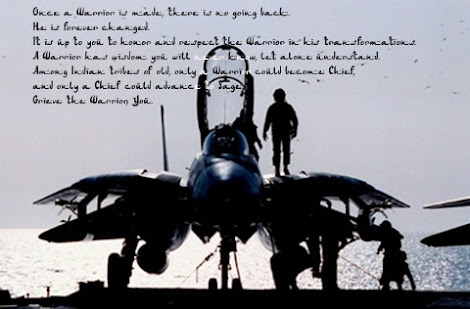The super manouverable MiG-29OVT aka Mig-35.Two years ago, the MiG-35's prototype, the MiG-29-M/OVT, was displayed at the MAKS-2005 aerospace show in the town of Zhukovsky near Moscow. In January 2007, the MiG-35 was rolled out for the first time
 ever; and it stole the limelight during the MAKS-2007 show last August. And those of you who have wathched that flight video will know why it was the star of the MAKS-2005 "party".Last year russia unveiled the MiG-35 at the Aero India airshow in Bangalore, amid Moscow's keenness to sell these planes to India. It was reported that the MiG-35 made its way from Moscow to Bangalore in less than three hours, assisted by in-flight refueling on the way and flying at supersonic speeds.The MiG-29 and MiG-29M warplanes are, in fact, fourth-generation and generation four-plus fighters. Indian Air Force Already operates MiG-29 with few indigenous modifications in its avionics. The MiG-35's specifications and performance match the requirements of the Russian Air Force and most foreign customers. The low-risk and inexpensive MiG-35 program will help produce more export-oriented versions.The version was essentially build around IAF M-MRCA deal and Indian Navy's requirement to arm the future aircraft carrier "Vikramaditya" and "Air Defence Ship".As far as the evaluations are concerned the MiG-35 must outperform fourth-generation fighters and equal fifth-generation aircraft to be chosen as the new lead-in fighter for Indian Air Force.MiG-35 designers moved to upgrade the fighter's radio-electronic equipment, while heeding the impressive potential of the MiG-29's aerodynamic concept.
ever; and it stole the limelight during the MAKS-2007 show last August. And those of you who have wathched that flight video will know why it was the star of the MAKS-2005 "party".Last year russia unveiled the MiG-35 at the Aero India airshow in Bangalore, amid Moscow's keenness to sell these planes to India. It was reported that the MiG-35 made its way from Moscow to Bangalore in less than three hours, assisted by in-flight refueling on the way and flying at supersonic speeds.The MiG-29 and MiG-29M warplanes are, in fact, fourth-generation and generation four-plus fighters. Indian Air Force Already operates MiG-29 with few indigenous modifications in its avionics. The MiG-35's specifications and performance match the requirements of the Russian Air Force and most foreign customers. The low-risk and inexpensive MiG-35 program will help produce more export-oriented versions.The version was essentially build around IAF M-MRCA deal and Indian Navy's requirement to arm the future aircraft carrier "Vikramaditya" and "Air Defence Ship".As far as the evaluations are concerned the MiG-35 must outperform fourth-generation fighters and equal fifth-generation aircraft to be chosen as the new lead-in fighter for Indian Air Force.MiG-35 designers moved to upgrade the fighter's radio-electronic equipment, while heeding the impressive potential of the MiG-29's aerodynamic concept.Due to cooperation between RSK MiG and the Fazotron-NIIR corporation, the MiG-35 became the first Russian fighter to feature the Zhuk-AE fifth-generation electronic-scan phased-array radar. As the name suggests Zhuk is a Active Electronic Scanned Array(AESA) radar with multiple target aquisition,identification and attack capabilities.The Zhuk-AE, which has a longer range than the radars of foreign generation plus-plus fighters, can calculate the exact number and type of enemy targets, and facilitates successful beyond-the-horizon attacks.
By increasing the number of its transceiver modules by 50%, the radar's range and target-acquisition parameters can be enhanced considerably. The Zhuk-AE operates in conjunction with two optronic target acquisition and identification systems featuring infrared and laser channels. They detect, identify and automatically track several targets, calculate their coordinates and provide data to the fire-control system. One optronic system tracks aerial targets, and the other one detects ground and naval targets and also provides navigation data. Optronic devices enable the fighter to escape detection by the enemy, facilitate round-the-clock operations and make it possible to hit visible and beyond-horizon targets.The Optronic summary of the aircraft is-
In air combat, the optronic suite allows:
Detection of non-afterburning targets at 45 km range and more;
Identification of those targets at 8 to 10 km range; and
Estimates of aerial target range at up to 15 km.
For ground targets, the suite allows:
A tank-effective detection range up to 15 km, and aircraft carrier detection at 60 to 80 km;
Identification of the tank type on the 8 to 10 km range, and of an aircraft carrier at 40 to 60 km; and
Estimates of ground target range of up to 20 km.
The MiG-35's defensive systems warn the pilot in case of danger and automatically activate ECM (Electronic Counter-Measures) systems and also launches heat and radar decoys. The defensive system equipment consists of radar reconnaissance, electronic countermeasures, and optical systems — notably the laser emission detector on each wingtip — which are able to detect and evaluate the approaching danger and operate decoy dispensers to counteract the approaching threat in the radar and infrared ranges.Moreover, the pilot is notified if the plane is being tracked by enemy radar or targeted by a laser range finder. The system also detects approaching enemy missiles and shows their direction. The optronic systems have the comparable potential as those of american APG series of AESA radar(Excluding APG-81,aboard F-22 Raptor) and can be installed on fifth-generation and generation four plus-plus warplanes.
The MiG-35's most impressive feature, which is not present in any other fighter aircraft in this world is the RD-33OVT thrust-vector engine that was previously tested on the MiG-29. Its intersecting nozzles can point in any direction, enabling the plane to perform breath-taking stunts.This means that the thrust vectoring has an effective angle of full 360 degrees. The engine ensures 100% controllability at maximum and zero speeds and even allows the MiG-35 to fly backwards and performing those exclusive and trademark manouveres like Pucachev's Cobra and kulbit-The aircraft stalls in mid-flight, nose at 90 degrees like a cobra ready to strike, and slides backwards.Complete this manouvre upto 360 degrees and you are head-on-head with the pursuing fighter. In a real dogfight, such a move can turn the hunted into the hunter. The fighter's designers believe that it embodies engineering solutions typical of a fifth-generation fighter and is therefore better than any European aircraft. The MiG-35's design is similar to that of the MiG-29 and makes it possible to increase the internal fuel load by 50% and the ordnance load by over 100%. Unlike the MiG-29, the MiG-35 is now classed as a medium-weight aircraft because its maximum take-off weight has increased by 30%. Drop tanks and a mid-air refuelling system allow it to fly long-range combat missions. R&D, production, operating and recycling expenses have been reduced considerably. Using computer systems to identify faults and target maintenance and repairs where and when it is needed allows engineers to save time. The plane's airframe, engines and equipment also have a longer service life.
There's a strong case with MiG-35 since it has high rate of compatibility with indian aircraft complex ,so there won't be any problem in industrial offset rules.The aircraft also has an upper edge because the MiG-29M version will join the Indian Navy with carrier ship "Vikramaditya".But the aircraft still needs a through evaluation since it is a low cost transformation of an cold war era aircraft.






















0 comments:
Post a Comment